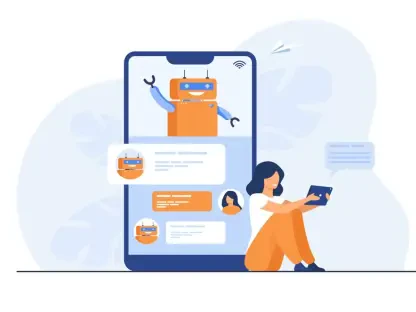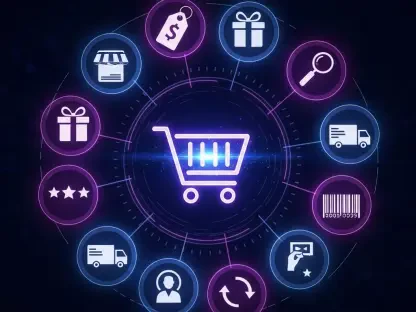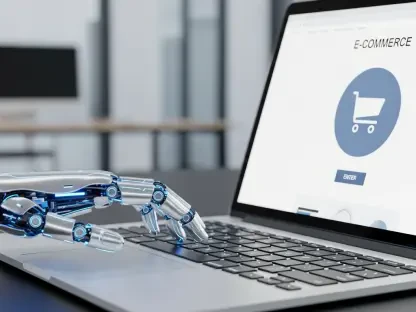If a company has many picky customers, they may need to change how they reward salespeople or assign specific salespeople to those customers. Fussy shoppers have very specific preferences and notice flaws others wouldn’t. Alternatively, a company could let these consumers who have particular tastes customize their products to meet their specific preferences. That way, they are offering products that are best for picky customers, not just the best products.
In 2024, we are witnessing more of these “defensive buyers” who demand the best version of a product wrapped up in personalized attention while trying to protect their personal information. Others hunt for low prices without compromising quality, and some consumers try to support sustainable practices while benefiting from fast delivery. As we can see, customer preferences are in a state of flux. Add economic uncertainty, inflation, conflicts, and climate change to that, and you have a real retail conundrum.
But as with all epochs before, most agile companies will survive these changes as well. That is why this article delves into one of the top emerging trends in retail, the “phygital” shopping experience, which could help you gain a competitive edge and stay ahead.
Adapting To Both Boomers And Gen Z With New Solutions
You heard it right. “Phygital retail” or “hybrid shopping” gained popularity because it melds together the different shopping preferences that are usually associated with Boomers and Gen Zers. Boomers enjoy touching and examining products in-store (and sometimes they also like personal interaction), while Gen Z opts for the convenience of online shopping. Retailers are working to find a balance by combining the best parts of traditional in-store experiences with the ease and accessibility of online shopping.
Before committing to spending their hard-earned money, 95% of consumers check out products online. On the other hand, 58% of them are willing to pay more for items from brands that have positive online reviews. Successful retailers in 2024 are integrating their physical and digital channels effectively, using advanced inventory management systems, customer relationship management tools, and analytics to create a seamless experience for customers at all touchpoints.
Imagine you’re shopping for a product online, and then you head to a physical store where personalized recommendations based on your online behavior are ready and waiting for you.
It may sound like something out of a science fiction movie, but it’s our current reality.
Bridging the Gap Between Online and In-Store Experiences
Retailers are facing big changes in how people shop. Online sales have been growing, and by 2026, they’re expected to be 24% of all global retail sales. But most customers still like to shop in physical stores.
One way to deal with this challenge is the “phygital” concept. This means combining physical and digital retail strategies to make the shopping experience smooth.
The hybrid shopping approach recognizes that buyers move between physical and digital shopping. It aims to connect the two worlds so that customers have the same experiences either way. Using this new approach might just provide retailers with a means to adapt to the changing retail world and meet different customer needs.
Enhancing Customer Engagement and Loyalty Through Phygital Integration
In today’s tumultuous retail arena, shareholders race to implement new technologies at a lower cost, and right now, integrating digital and physical channels seamlessly is the new frontier. Buyers demand a consistent experience across in-store, online, and mobile touchpoints, so phygital was always the next logical step.
It goes hand in hand with personalization, which plays a big role in modern retail. Vendors must learn how to get the most out of customer data, artificial intelligence, and machine learning in an effort to craft the best personalized recommendations, deals, and content. Experts are shouting from the rooftops that shoppers want to feel special in order to stay loyal to a brand.
In fact, here are the numbers:
| 32% | 71% | 76% |
| of people will stop supporting a brand after just one bad experience. | of shoppers expect personalized experiences in most of today’s brands | of consumers are disappointed when they don’t encounter personalized experiences |
Phygital will help you seamlessly blend online and in-store experiences and boost those numbers. Customers mostly start their shopping journey online, and if they like what they see, they will want to stop by your actual brick-and-mortar store. Marketers want to make sure they continue on that experience, so when shoppers visit your physical shop they don’t feel a disconnect. The same goes for the other way around when someone stumbles across your store and then checks out your website. If they enjoy both, it completes a great shopping experience.
Driving Growth Through Phygital Retail
Phygital retail is effective at capturing and holding customer attention. From personalized recommendations to enjoyable experiences and seamless shopping both in-store and online, businesses that engage consumers keep them coming back for more. When your audience is happy with your effort and bespoke approach, they are more likely to spend time with your brand, return for more shopping, and recommend you to others, which helps the company grow naturally.
Data is crucial for phygital retail. Businesses use data to understand customer behavior, preferences, and issues. By analyzing large amounts of consumer behavior information, retailers can gain insights into their target audience, identify trends, and anticipate buyers’ needs. These insights help companies make informed decisions, run more impactful marketing campaigns, and enhance inventory management. Data analysis and informed actions later lead to improved efficiency and higher profits.
Innovative Retail Trends: Self-Checkout, BOPIS, and Beyond
The way people shop is changing. Everyone is in a constant rush, which is how self-checkout has risen in popularity. Automated self-service allows buyers to scan and pay for items quickly without waiting for help from store staff.
Another way to save time and shop quickly is through the Buy Online Pick-Up In Store (BOPIS) option, which has become very popular in retail, particularly during the COVID-19 pandemic. People can freely browse products online, click pay, and then pick them up in a physical store, which is why the option is so convenient. The BOPIS market is probably going to reach $703.18 billion by 2027, displaying a yearly growth rate of 19.3%.
In-store mobile apps. Customers use these apps to take advantage of discounts, compare prices, read product reviews, and find items in the store. Retailers can collect important data on what customers like and how they behave, which helps with targeted marketing efforts.
The in-store mobile apps offer vendors a terrific opportunity to connect with visitors on a more personal level. This method is a great way to offer personalized deals and suggestions to each shopper.
Phygital retail brings additional innovations. By implementing interactive displays, smart mirrors, and fun touchscreens, it is much easier to connect to clients. Your visitors can use AR and VR technologies to try on clothing, add accessories, and even test makeup virtually without needing to see products in person. Such a high-quality, bespoke service extends your brand’s reach and reputation, allowing people who don’t want or cannot visit stores to shop comfortably and respectfully. Add interactive displays and smart mirrors on top of that to provide extra product details and style suggestions, making the shopping experience more engaging and personalized.
In addition to marketing, product, and checkout improvements, we are also seeing an increase in the number of people using digital wallets like Apple Pay, Google Pay, and PayPal. These virtual wallets weigh nothing, except if you are paying through a smartphone or other wearable devices.
| 71% | 49% | 68% |
| of people who tried self-checkout during the pandemic say they will use it again | of shoppers using BOPIS made additional purchases while picking up their items in-store | of US consumers research products on their mobile devices while standing in physical stores |
Navigating the Future of Retail with Phygital
Whether you prefer traditional stores or online brands, you will probably never have to adjust again. Soon we are all going to have the virtual option of try-on hauls, precise voice searches, and maybe even the exclusivity of personal shopping assistants we can meet in-store after setting up appointments online. Also, as buyers become more picky and start to expect even more personalized or special experiences, businesses need to keep up and focus on providing integrated, hybrid experiences.
By blending the physical and digital worlds, retailers can create a shopping experience that meets the diverse needs of modern customers. It seems that the phygital revolution is on its way to enhancing satisfaction and loyalty, so why not embrace this innovative approach and have fun while you do it?









